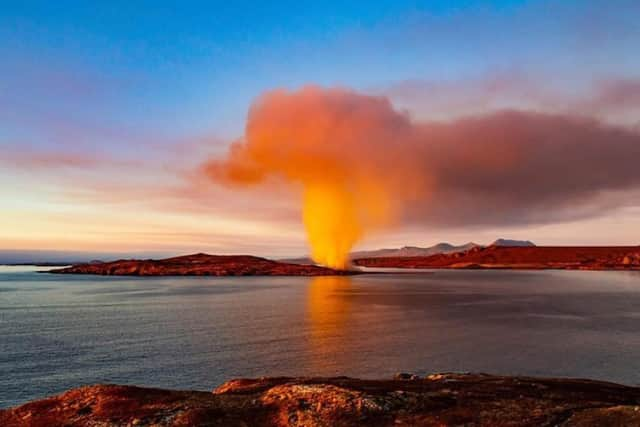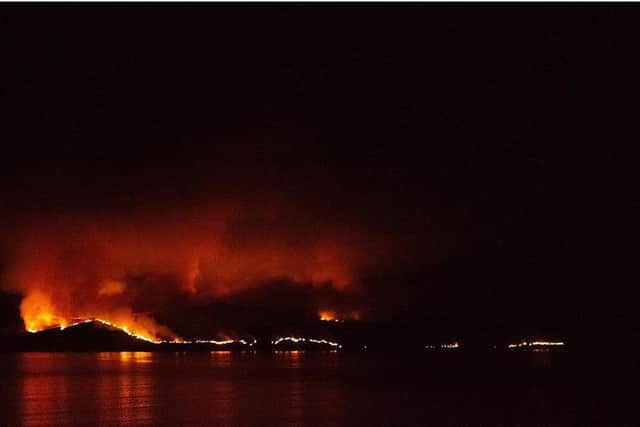Estate owners say Gruinard fire 'good' for island once contaminated by anthrax
Gruinard island, which sits off the mainland between Achiltibuie and Laide in Wester Ross, went up in flames on Saturday night, with fire ripping through the uninhabited island that was used for military-led biological testing in the 1940s.
Health officials at NHS Highland said there was no risk to the public from the fire on Gruinard, which is also known as Anthrax Island or the Island of Death given the experiments during World War Two.
Advertisement
Hide AdAdvertisement
Hide AdWhat caused the huge fire on the island, which covers around 200 hectares, has not been confirmed. Muirburn – the burning of moorland to encourage regrowth for grazing – and a stray ember from a canoeist’s campfire have been cited locally as possible causes.


A spokeswoman for Gruinard Estate, which owns the island, would not confirm if fire was deliberately started, but said the blaze did not run out of control on Saturday.
A spokeswoman for estate said: "It hasn't caused any damage. It has done good. The island was totally impenetrable and the sea eagles killed any wildlife there.
"In around two months, there will be green shoots.


"It will certainly have done the island a lot of good. It didn't go out of control. It looked dramatic.”
Oyster catchers, curlews and geese are said to have inhabited Gruinard, according to locals.
Donna Hopton, who lives opposite the island on the mainland, said she saw smoke rising from Gruinard around 6pm on Saturday as she was out walking her dog.
Ms Hopton, who runs Gairloch Marine Wildlife, said: “The instant thought is that it was muirburn as its muirburn season, but we thought that was a wee bit odd as the island is not used for grazing. The other rumour is that there were a couple of canoeists there at the weekend who had a campfire.”
The island has effectively been a no-go zone for more than 80 years, with local shipping charts warning crews to stay clear.
Advertisement
Hide AdAdvertisement
Hide AdThe location was classified as anthrax-free in 1987 following a clean-up campaign after a group called the Dark Harvest Commandos highlighted the contamination.
In 1942, Gruinard was requisitioned from its owners for the experiments, with anthrax bombs dropped on sheep from a Vickers Wellington bomber plane to determine how harmful the highly infectious disease could be in a warfare situation.
The power of anthrax became quickly clear when the sheep started dying after three days, with its potential to paralyse or render cities hospitable summed up in the report of the tests.
A sheep infected with the Gruinard anthrax later washed up on the mainland with compensation quickly paid to several locals after a number of farm and domestic animals died.
Following the fire, a Ministry of Defence (MoD) spokesperson said: “Gruinard Island was decontaminated and deemed safe in 1987.
“As part of the sale of the island in 1990, the MoD agreed to undertake further work, if necessary, within 150 years of its sale.”
A message from the Editor:Thank you for reading this article. We're more reliant on your support than ever as the shift in consumer habits brought about by Coronavirus impacts our advertisers.
If you haven't already, please consider supporting our trusted, fact-checked journalism by taking out a digital subscription.
Comments
Want to join the conversation? Please or to comment on this article.
